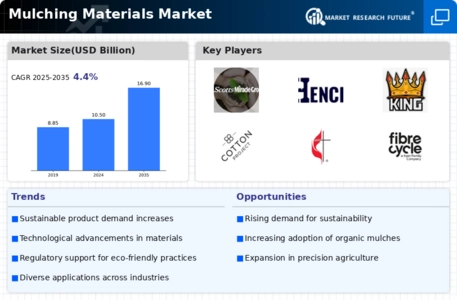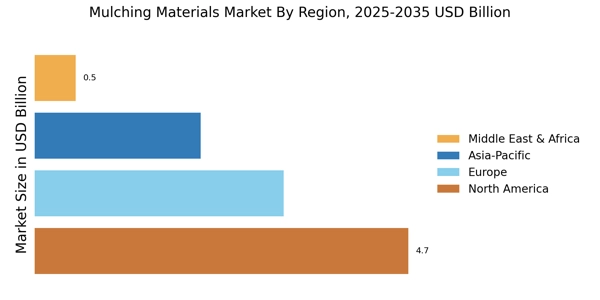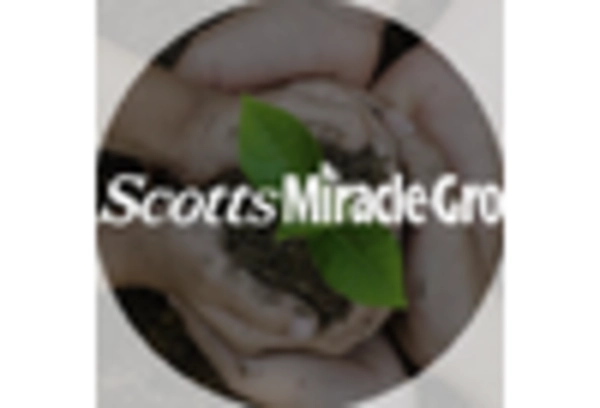Rising Awareness of Soil Health
There is a growing recognition of the importance of soil health in agricultural productivity, which serves as a significant driver for the Mulching Materials Market. Farmers are increasingly adopting mulching practices to improve soil structure, enhance nutrient availability, and reduce erosion. This trend is supported by research indicating that proper mulching can lead to yield increases of up to 20% in certain crops. As educational initiatives and resources become more available, the understanding of the benefits of mulching is likely to expand, further propelling the demand for various mulching materials. This heightened awareness is expected to play a crucial role in shaping the future of the Mulching Materials Market.
Increased Demand for Sustainable Agriculture
The rising awareness of environmental issues has led to an increased demand for sustainable agricultural practices. This trend is particularly evident in the Mulching Materials Market, where consumers and farmers alike are seeking eco-friendly options. The market for organic mulching materials is projected to grow significantly, driven by the need for soil health and moisture retention. According to recent data, the organic mulching segment is expected to witness a compound annual growth rate of over 10% in the coming years. This shift towards sustainability not only benefits the environment but also enhances crop yields, making it a pivotal driver in the Mulching Materials Market.
Growth in Landscaping and Gardening Activities
The surge in landscaping and gardening activities, particularly in urban areas, is a notable driver for the Mulching Materials Market. As more individuals and businesses invest in outdoor aesthetics, the demand for various mulching materials has escalated. The landscaping sector is projected to grow at a rate of approximately 5% annually, with mulching materials playing a crucial role in enhancing soil quality and plant health. This trend is further supported by the increasing popularity of home gardening, which has seen a rise in the use of decorative and functional mulches. Consequently, the Mulching Materials Market is likely to benefit from this growing interest in outdoor spaces.
Technological Innovations in Mulching Techniques
Technological advancements in mulching techniques are transforming the Mulching Materials Market. Innovations such as biodegradable mulches and advanced application methods are gaining traction among farmers and landscapers. These technologies not only improve the efficiency of mulching but also contribute to better soil health and crop productivity. For instance, the introduction of smart mulching systems that monitor soil moisture levels is expected to enhance the effectiveness of mulching materials. As these technologies become more accessible, the market is likely to experience a shift towards more efficient and sustainable mulching solutions, thereby driving growth in the Mulching Materials Market.
Government Initiatives Supporting Sustainable Practices
Government initiatives aimed at promoting sustainable agricultural practices are significantly influencing the Mulching Materials Market. Various policies and subsidies are being introduced to encourage the use of eco-friendly mulching materials. For example, some regions are offering financial incentives for farmers who adopt organic mulching solutions. This support not only aids in reducing the environmental impact of agriculture but also fosters innovation within the industry. As these initiatives gain momentum, they are likely to create a favorable environment for the growth of the Mulching Materials Market, encouraging more stakeholders to invest in sustainable mulching options.


















Leave a Comment